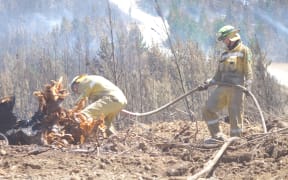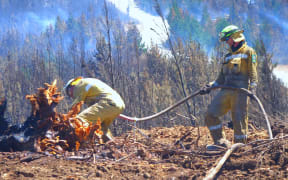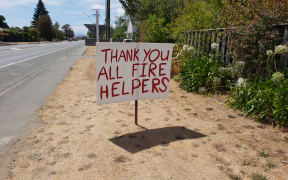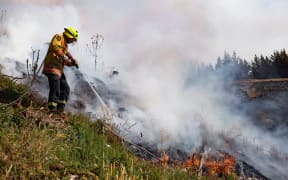A forest company that lost thousands of pine trees in the Tasman wildfires wants tougher rules around fire prevention to include the wider public.
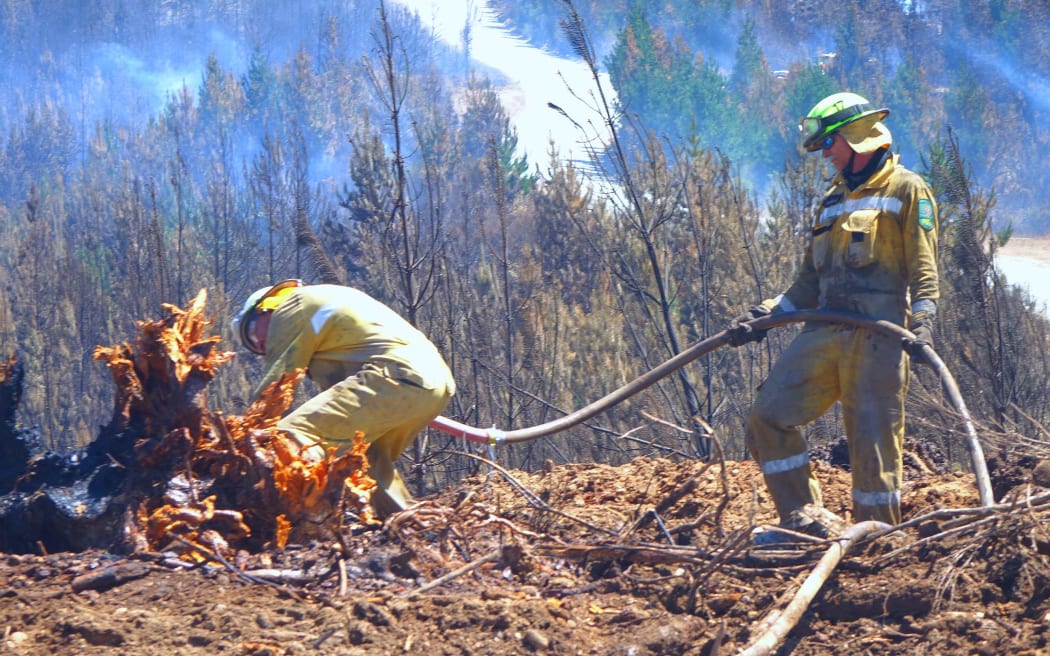
Photo: RNZ
The fire started in Pigeon Valley in the Nelson region on 5 February by a tractor tilling a dry field. It is thought that farm machinery sparked against a stone, sparking the blaze which grew to become the country's largest since 1955.
It raced across 2300 hectares of rolling, rural land, including 1400 hectares of trees owned by Tasman Pine Forests.
Almost two weeks later 55 properties were damaged, with losses reaching $30 million, and more than 3000 people had been evacuated from their homes.
Fire fighting and evacuation costs reached $50 million.
Tasman Pine Forests boss Steve Chandler was only a month into the job when he looked out of his Spring Grove office window in February this year, and saw the hills ablaze.
"It wasn't a good feeling. I had a bird's-eye view from the office of the fire when it started. The fire conditions at the time were in Code Purple which is 'extreme, extreme' basically, and when I saw the first plume of smoke I knew we had a problem because everything was so tinder dry.
"I've been through a few fire events but this was one of the bigger ones and I knew we had a big campaign on our hands."
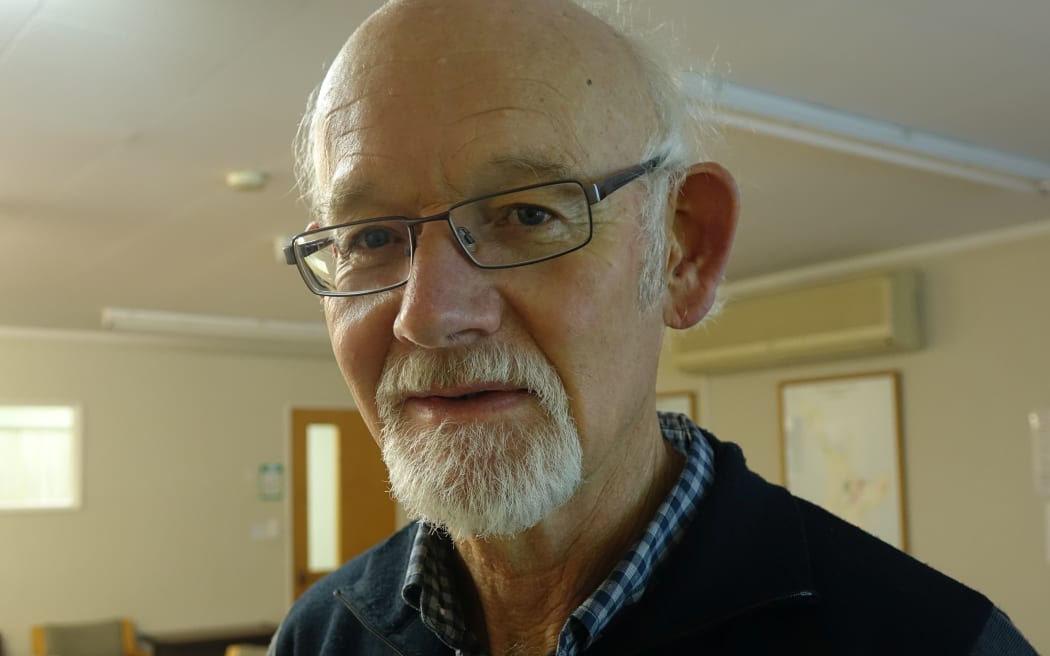
Tasman Pine Forests chief operating officer Steve Chandler at the headquarters near Wakefield. Photo: RNZ / Tracy Neal
Mr Chandler said the loss of income to Tasman Pine was still unknown, but it was expected to be large.
"We're recovering logs so it's too early to say just how much the loss we did incur, but it will be in the millions."
Mr Chandler said so far they had recovered more than 40,000 tonnes of damaged logs, many of which have been used to make timber veneer, or were turned into firewood.
He has now asked the government during a ministerial visit to the area today to consider if rules on banning the use of machinery during extreme fire-risk seasons should be widened to include all land owners.
"We would like some rules or guidelines that are common for all landowners in times of extreme fire danger, particularly around operating machinery and equipment that has the potential to create sparks."
Mr Chandler said Fire and Emergency New Zealand (FENZ) lacked any influence on this at present, outside of the forest industry.
"The government needs to strengthen legislation to correct this."
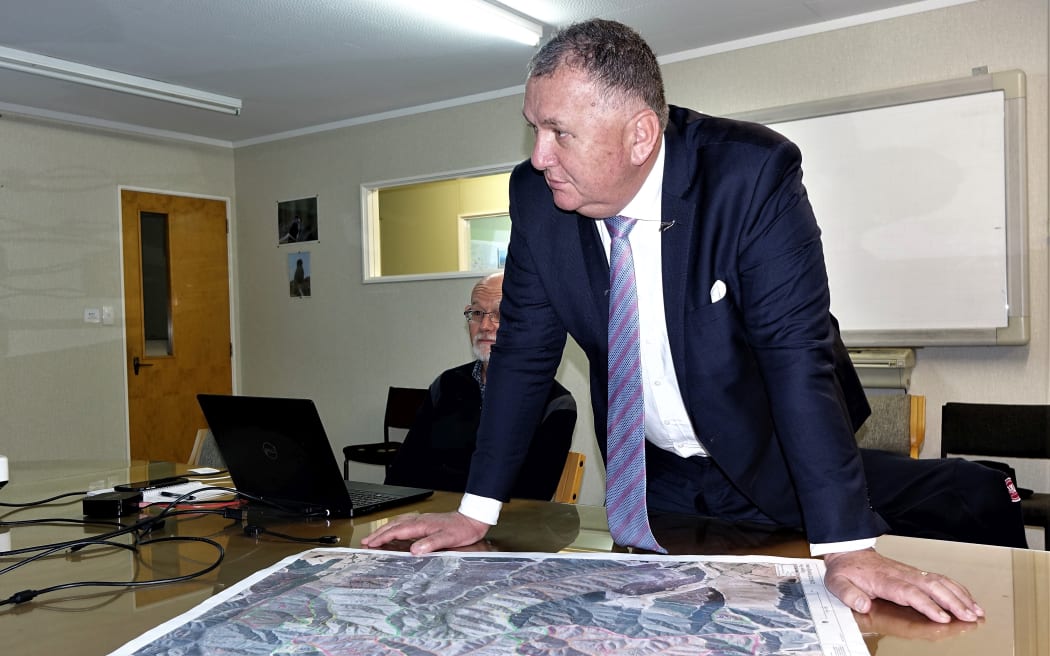
Forestry Minister Shane Jones in Nelson. Photo: RNZ / Tracy Neal
Forestry Minister Shane Jones said he was willing to look at ways it might work, and it was possible New Zealand could adapt similar rules in place in Australia.
He said he understood that forestry companies wanted to see adjoining land owners adopt better safety and fire-proof practices, and would encourage them to work with FENZ and associate forestry ministers to come up with a package of options.
Mr Jones said foresters should not have to bear the brunt of poor practice by adjoining land owners.
"I think it's a reasonable call for us to look at things like that."
Mr Chandler said they were now re-planting, but the regeneration fell outside the government's Billion Trees programme because they already ran a planted forest and the Billion Trees objective was to plant new area.
The government has set a goal to plant one billion trees by 2028, through which $120 million will be directed to landowners - particularly farmers - to include trees on their farms.
Mr Chandler hoped Tasman Pine would qualify for help to restore some of the native trees burned on their blocks.


